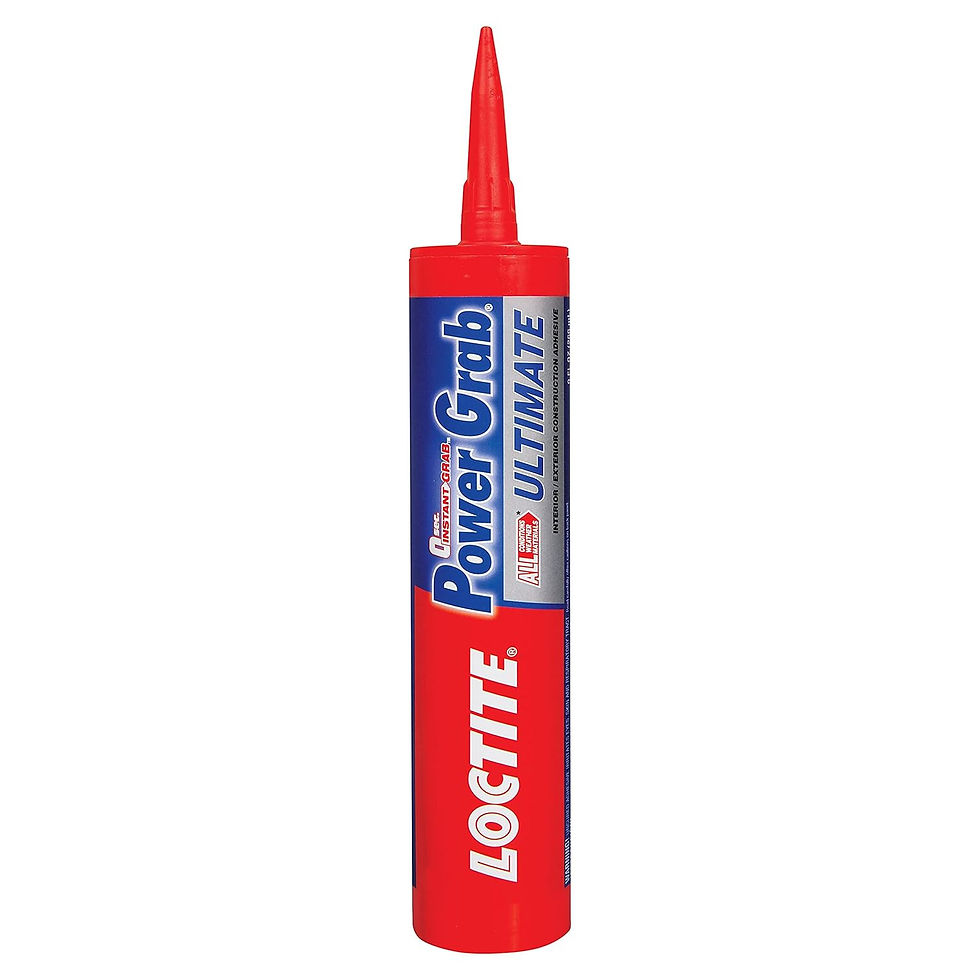When you need to stick two things together, you probably want to use all-purpose glue. But in fact, "all-purpose" glue is not really for all purpose. They are only effective for most objects, but not all. Have you ever tried to stick rubber and glass together? Can wood and plastic stick together? To stick things correctly, you must understand an important factor, which is "adhesion". What we at Beets are more concerned about is what kind of glue can be used to stick 3D printed objects (plastic) to different objects.
The table below introduces what adhesives are needed to stick different types of objects together. When you don't know how to stick things together, this is the best reference.

(Table data comes from makezine.com )
From the data in the table, we can see that hot melt glue, spray glue, contact adhesive, 502, nail-free glue and AB glue should be the glues that makers often have.
Glue Encyclopedia
All-purpose-glue
All-purpose adhesive usually refers to a type of solvent-based adhesive commonly used in building decoration and hardware maintenance industries. It is named for its wide bonding range and ease of use. It can generally be used to bond soft and hard materials such as wood, aluminum-plastic panels, leather, artificial leather, plastic, rubber, metal, etc. The main component of common all-purpose adhesive is chloroprene rubber, and benzene, toluene, and xylene are generally used as solvents. It is a yellow liquid viscous state and has good oil resistance, solvent resistance, and chemical resistance.

Alcohol glue/Fabric glue
Sticky cloth glue, also known as alcohol glue, is an acrylic synthetic resin polymer with high viscosity, stable properties, anti-pollution, good weather resistance, no damage to the skin, no adverse effects on plastics and iron wires, elastic after drying, colorless, suitable for the connection of prilon and wood, metal, cement, paper, silk cotton, and thermal insulation materials.

Spray adhesive
Glue spraying literally means to spray a viscous liquid in a scattered manner as a verb; as a name, it refers to a product name under current technology. That is, the process of spraying glue or paint in a scattered manner with a fully automatic glue spraying machine and making it adhere to another object according to a certain pattern.

Hot glue
Hot melt adhesive (English name: Hot Glue) is a plastic adhesive. Within a certain temperature range, its physical state changes with the temperature, while its chemical properties remain unchanged. It is non-toxic and tasteless, and is an environmentally friendly chemical product. It is popular because the product itself is solid, easy to package, transport, store, solvent-free, pollution-free, non-toxic; and has the advantages of simple production process, high added value, high bonding strength, and fast speed.

Contact adhesives
Contact adhesive is a special type of pressure-sensitive adhesive. Its biggest feature is that it produces bonding after "contact", that is, the same adhesive is applied to the surfaces of two adherends, and bonding occurs through the mutual contact of the two coated surfaces. After the contact adhesive is applied to the adherends, the surfaces first need to dry to form a transparent, non-adhesive polymer film, which is also the main difference between contact adhesive and ordinary pressure-sensitive adhesive.

Construction adhesive, Liquid Nails, Loctite
Nail-free glue refers to a multifunctional building structure strong glue with extremely strong adhesive force. It is generally called liquid nails abroad and nail-free glue in China. Nail-free glue uses glass glue and the price varies.

Ceramic glue
Ceramic adhesive is used to bond ceramics. It is required to have excellent wettability, heat resistance and medium resistance, and epoxy resin adhesive is usually used. Ceramics used under high temperature conditions mostly use inorganic adhesives. Radio ceramic components use silicone adhesives and insect glue. Polyurethane adhesives and phenolic-acetal adhesives can be used to bond ceramics to other materials.

Silicone sealant
Glass glue is a common household adhesive, composed of sodium silicate (Na2O·mSiO2), acetic acid and organic silicone. Sodium silicate is easily soluble in water and has viscosity. It is called water glass in the south and caustic soda in the north.

Wood glue
Wood adhesiveThe production of products in the wood processing industry, such as plywood, particleboard, medium density fiberboard, laminated products, decorative cladding and woodworking boards, requires adhesives with different properties. The emergence of adhesives not only plays an important role in saving wood and simplifying production processes, but also can bond materials with different properties such as metal or plastic to wood materials to make composite materials with various properties, thereby giving full play to the unique functions of wood and providing certain special uses.

502/Cyanoacrylate (Super glue)
502 glue is mainly composed of α-cyanoacrylate ethyl ester, with the addition of tackifiers, stabilizers, toughening agents, inhibitors, etc. It is a single-component glue synthesized through advanced production technology that instantly cures and sticks to many things.

AB adhesive (Two-component adhesive)
AB glue is another name for two-liquid mixed hardening glue. One liquid is the glue and the other is the hardener. The two liquids can only harden when mixed. It does not need to be hardened by temperature, so it is a kind of room temperature hardening glue. It is sometimes used in model making. It is generally used in industry.

#Glue#Glue Guide


Comentários